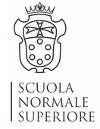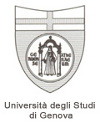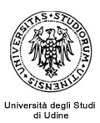Spreading visual culture: contemporary art through periodicals, archives and illustrations.
Precisely the role of images, even in scholastic publications, is at the heart of the reflections of Enrico Bemporad, who, differently from the prevailing educational ideas at the time, was convinced of their importance. Preserved largely intact, the archive of Giunti allows a fascinating journey through the illustration of the early twentieth century: among others, Vittorio Corcos and Sergio Tofano (Sto), Duilio Cambellotti and Antonio Rubino, just to name a few. In the same years, essential to understand the debate around the graphics of the first 20th century, Vittorio Pica makes a name for himself as an art critic, presenting, especially from the pages of «Emporium» (now fully digitalized and available on the website of the Laboratory of Visual Arts at the Scuola Normale Superiore), the figures of the most important contemporary artists (from Rodin to Rops, from Daumier to Crane), also disputing with «Il Risorgimento Grafico». The Siena Unit, which will study the “Images and texts for critics of modern art in Italy, from the symbolism and the historical avant-gardes, to the years between the wars: the role and legacy of Vittorio Pica”, will develop a comparative analysis divided into different areas of interests, from the thematic one (current artistic movements, taste phenomena, the history of collecting, the history of cultural institutions, etc.), to the geographical (the Italian situation, Europe, the Americas, the East and Japan, Africa and Oceania, important for the so-called “Japonism”) to the critical-historical subjects (art and literature, art criticism and theory of the reception, film and photography, architecture and decoration, museum, etc.). Firstly an accurate map of the public and private archival materials referable to the Neapolitan critic will be defined, and the bibliographical and archival situation will be updated. Afterwards, a detailed survey on the thirties and early forties will be carried out, thanks to the material preserved in the historical archive of the art dealer Stefano Cairola (now housed in the Faculty of Humanities of the University of Siena). Following the model of the other Units, the scrutiny of documents will be followed by the selection and acquisition, through digital scanning, of those considered of greater interest. Afterwards, the Unit will proceed to reprocess the data in order to present them in a coherent platform for the benefit of further investigations. The deepening of Pica's figure will emblematically permit to integrate modern art, art critics, history of collecting, in a broader historical contexts, made by international relations, in which it would be possible to better understand and define the European artistic currents, comprised between symbolism and first avant-garde experimentations.
Following page...
The enucleated events lead up to the threshold of the Second World War, thus bringing the Project towards its second part, which since, as said earlier, is in a dialectical and problematic dialogue with the first half, presents to the art historians new challenges, readable, in an innovative way, through a detailed and meticulous analysis of the periodicals' system. Significantly, the artistic field is now strongly marked by the emergence of militant magazine of art criticism, a phenomenon closely related to the rise of avant-garde movements, the so-called neo-avant-garde, which reach their maximum influence in the late sixties. On the basis of some isolated examples of the first half of the century, such as the Futurist periodical «Lacerba» (already the subject of numerous studies and scans at some international research departments), the exponents of the post-war neo-avant-garde Italian movements, identify the magazines as the most effective and immediate tool in order to self-promote themselves and to stimulate a debate. The militant reviews were founded primarily with the intent to circumvent the official publishing channels, achieving both passionate and specialized readers, potentially interested in supporting and joining them. At the time, this type of cultural operation reached its goal only rarely: however, they now constitute a valuable source of documentation to get inside the development of many of the most significant Italian post-war art events, even if, sometimes, from a partial but still important perspective. As in the other cases, the Udine Unit, which will study these magazines, aims to digitalize this irreplaceable exo-editorial heritage and to make it available on-line, along with all the other documentary materials. A unique and accessible, intermedial and intertextual, archive will provide scholars with richly figurative and critical material, tracing the history of contemporary art through the experiences, among others, of «Arti Visive» (1952-57), «Azimuth» (1959-60), «Marcatré» (1963-1970) and «Metro» (1960-1970). From a methodological point of view, we will always keep in mind that these different periodicals (using an “inappropriate” term for these inconstant reviews), are actually divided into two historical phases, though with inevitable overlaps. The first, from 1945 to 1965, is indeed characterized by a marked exo-editorial activism, starring the same artists and critics involved in the debate; in the second, from 1960 to 1980, the periodicals go back to a greater professionalization, gradually marginalizing the exo-editorial phenomenon. The final term of the National Project is the case of the movement of the “Visual Poetry”, following a critical-historical trajectory who comes to its natural conclusion with the periodical «Lotta Poetica», a place for discussions and debates between artists, writers, historians and art collecting. If the verbal-visual movement was born with the desire to deconstruct the contemporary society in its own language structures, the review edited by Sarenco aims, as stated in the first issue in June 1971, “to set a constant battle at two levels: a) the linguistic level, for the destruction of the structures of the bourgeois culture, b) the political level, sustaining the vanguard of the working class and the student movement”. As will be explained in detail in the following paragraphs, the work of each Unit, characterized by a strong methodological consistency and unity, will be accessible thanks to a common platform that will lead to the different databases, structured according to the individual needs (also considering possible copyright issues). The Project will also secure the cooperation of national and international scholars of the highest level. The availability of the materials is ensured by specific agreements, certified by the letters accompanying the Project.
|Objectives | The project (1, 2, 3, 4, 5, 6) | Hide |















